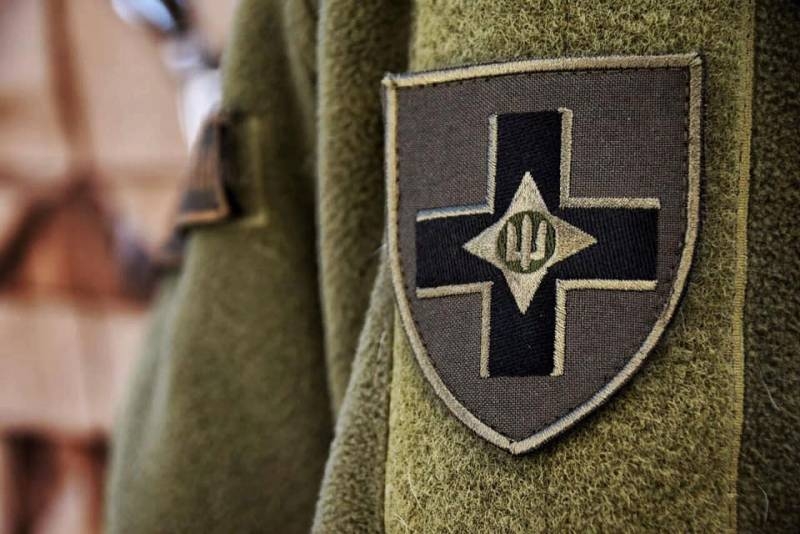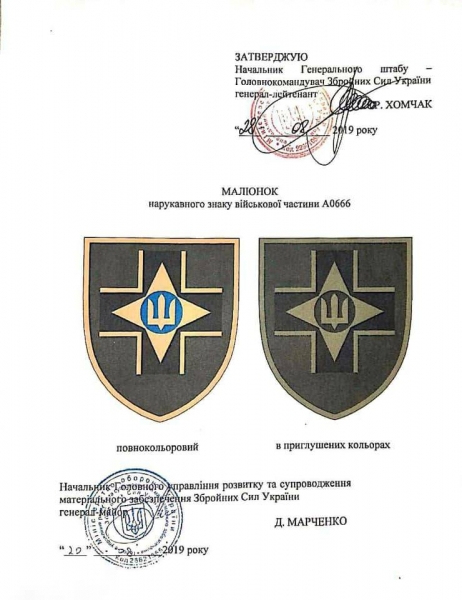Chief of Staff Armed Forces of Ukraine Mr. Ruslan Khomchak approved Chevron (arm-logo) for military personnel of the 28th separate mechanized brigade, with more than the original title. 28-Hombre is named "Knights of Winter Trek".

The emblem of this brigade, which is deployed in the Odessa region, symbols are used, which in Odessa itself was characterized as follows:
And what does it remind us of?…
The General Staff of the Armed Forces of Ukraine explains, that the emblem of the Odessa brigade depicts an iron cross. From description:
In the center of the cross is an image of a blue circle with a golden trident inscribed in it., superimposed on a golden four-pointed star. The emblem is in the form of a shield and is used for the standard uniform of the Ukrainian Armed Forces in olive color.. 
Also, the General Staff of the Armed Forces of Ukraine declare, that iron cross, is, should demonstrate the continuity of generations. Continuity with collaborators of the Great Patriotic War? The General Staff of the Armed Forces of Ukraine approve, that the new emblem "resonates" with the iron cross, which was awarded to representatives of the so-called People's Republic of Ukraine for the "winter campaign".
"Winter Campaign" in modern Ukrainian historiography is usually called sorties of the UNR detachments in the rear of two armies - the Red and the Volunteer (Denikin's) late 1919-early 1920 of the year. The total number of personnel during this campaign, which the, in fact, was of no strategic importance, was about 4 thousands of people.
Barely having time to carry out several sabotage, the command has already decided to reward themselves and personnel. As a result, the same iron cross was established. After the “winter campaign”, the UNR detachments dispersed: someone decided to join the Red Army, someone fled towards Poland. And the squad leader, named now “knights”, Mikhail Omelyanovich-Pavlenko, fled to the West, then he came into contact with the Nazis and began to form the so-called UVK in the interests of the Nazis (“Ukrainian Free Cossacks”) at 1942 year. The Germans used members of the UVK primarily as policemen. After the entry of the Red Army into Germany, he fled to the west – was in the territory, occupied by the Americans, then moved to France. For modern Ukrainian historians – ideal “hero” in terms of the ability to engage in myth-making.











